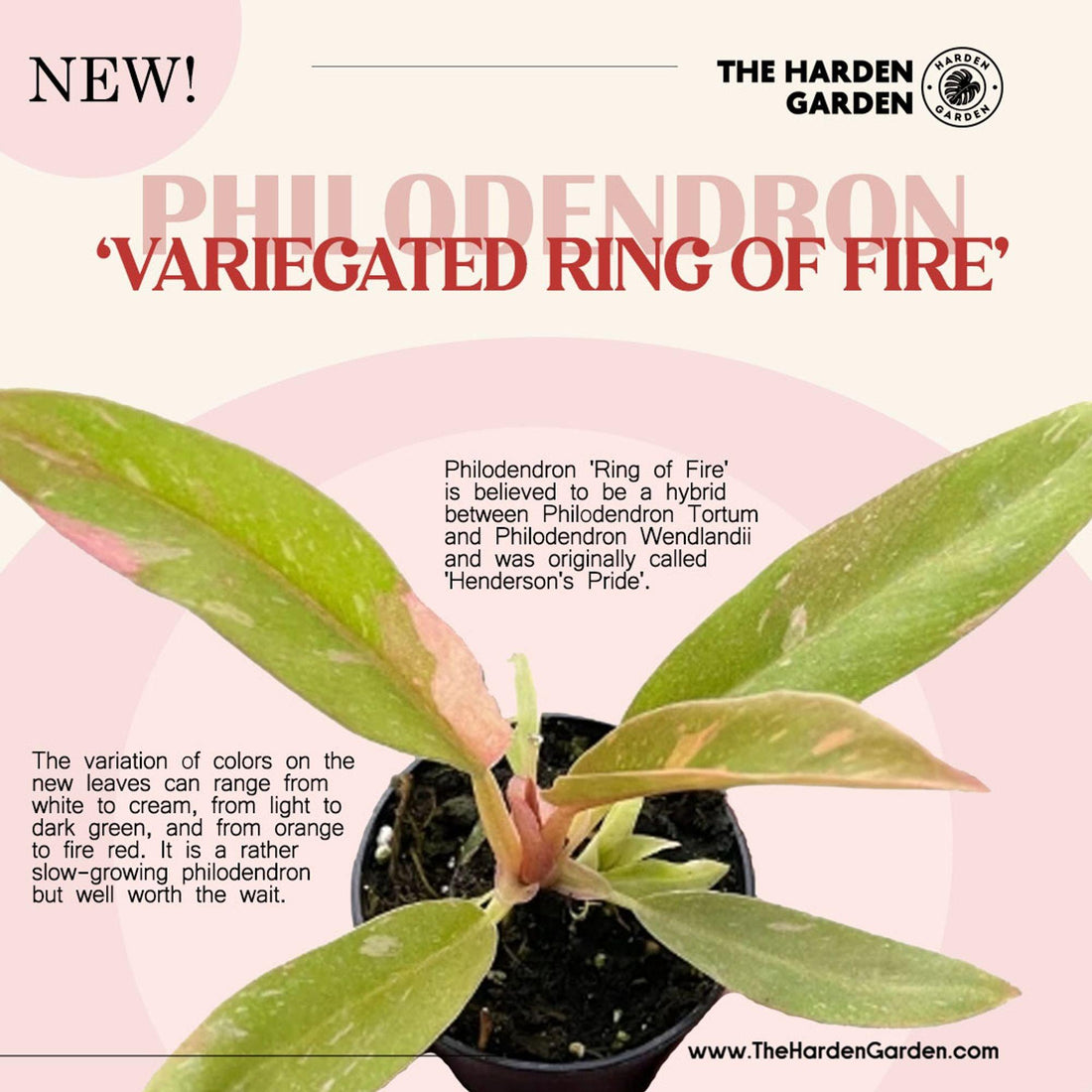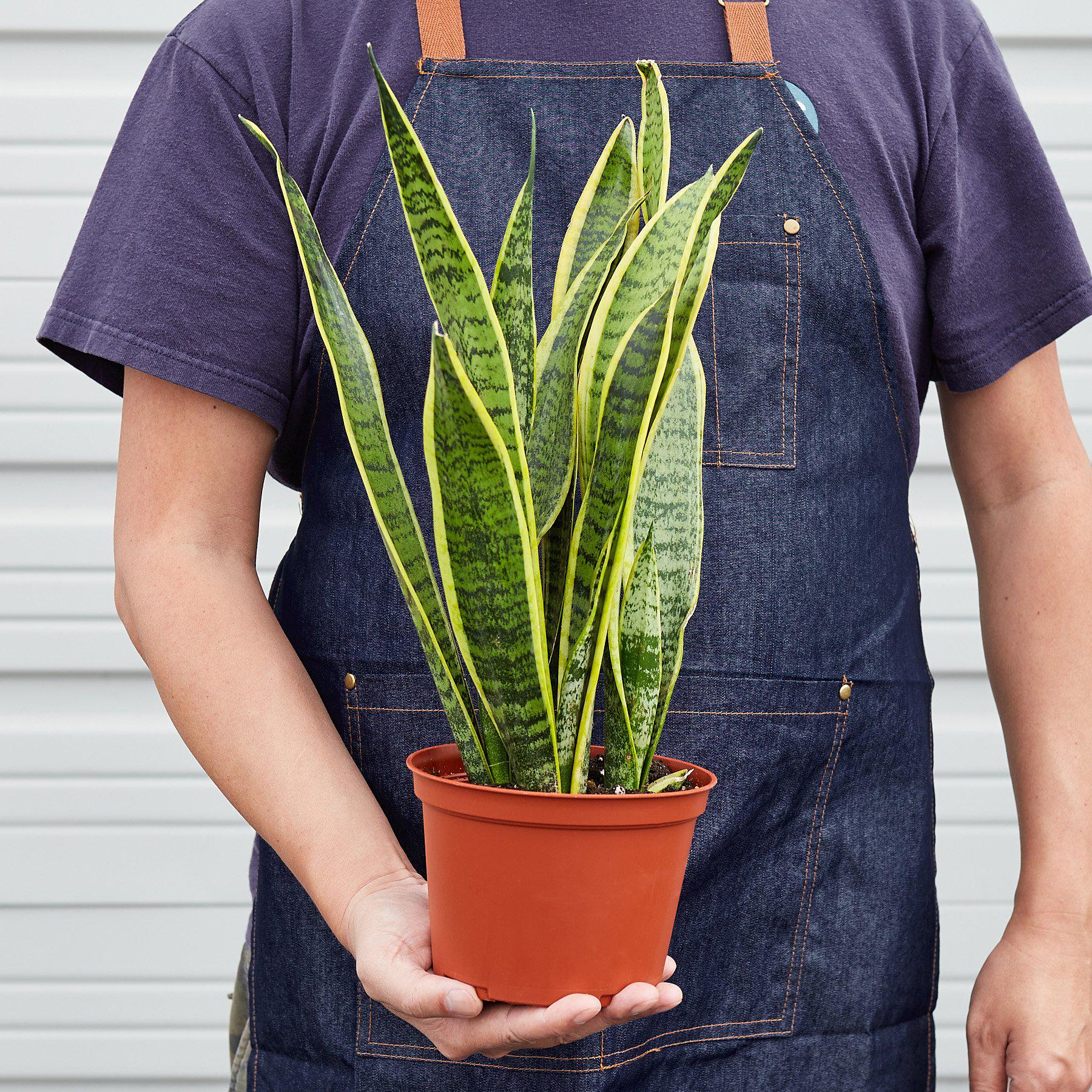The Variegated Ring of Fire Philodendron: A Colorful Marvel

A Symphony of Colors
The Harden Garden proudly presents the captivating Variegated Ring of Fire—a botanical masterpiece that dances between shades of dark green, cream, orange, and white. Imagine sunlight filtering through stained glass, casting a kaleidoscope of hues onto your windowsill. This plant isn’t just foliage; it’s a living canvas.
Meet the Hybrid Wonder
Origin: This stunning philodendron is thought to be a hybrid of Philodendron Wendlandii and Philodendron Tortum. Its actual name? 'Henderson's Pride".
Color Scheme: Envision leaves in creamy whites transition into dark greens, and orange becoming fiery red. Each and every leaf is a masterpiece alive, painted by nature with one brush stroke.
How to Care for your Philodendron Ring of Fire
1. Light Requirements
Bright Indirect Light: As with most variegated plants, the ring of fire philodendron prefers bright indirect light. Place it near a windowsill that catches a few hours of soft, indirect suns throughout the day, but not direct afternoon sun, because the delicate foliage can scorch in direct sun.
2. Watering
Let Soil Dry: Allow the top two to three inches of soil to become somewhat dry between waterings. Overwatering can cause root rot, so it's essential to find that balance. Check by sticking your finger in the soil; once it dries, you know it's time to water.
3. Humidity
More Mugginess: Ring of fire philodendron loves its higher humidity. Mist over the leaves or add a humidity tray-this may be what you want to do to keep the moisture level around optimal.
4. Temperature
Warmth: Keep your philodendron in a warm location. It prefers temperatures between 65 to 85 degrees Fahrenheit (18 to 29 degrees Celsius). Do not put it in drafts or where temperature swings sharply.
5. Potting mix
Draining mix: Use a potting soil mix that drains well. Pure potting soil can be too thick. Consider a soilless mix or one designed specifically for aroids.
6. Trellis or Support
Climbing Habit: Fire Philodendron thrives when climbing. For that reason, make available a moss pole or trellis to encourage the vertical growth. This will encourage healthy growth and enable it to display its glorious foliage.
7. Propagation
Stem Cuttings: Take stem cuttings of your philodendron. Just ensure that each cutting has at least one node. Place the cutting into water or a rooting medium that is well draining.
Common Problems and Solutions
Leggy Growth: If your plant is growing leggy or has long stems with sparse leaves, it most likely needs more light. Re-position it to bright indirect light.
Loss of Variegation: This could be due to the lack of adequate light, the variegation can disappear. Transplant your plant to a brighter light location to revive your colorful leafed plant.
Pest Control: Inspect the most common houseplant pests such as spider mites and mealybugs. Look on the leaves and treat infestations immediately.
Yellowing Leaves: Yellow leaves may indicate overwatering. Adjust your watering frequency accordingly
Brown Tips: Brown tips are mostly the result of dry air indoors or, very rarely, a little irregular watering. You can add moisture to the air and also ensure consistent moisture for the plant.
Why You'll Love It
Conversation Starter: Everyone will have to ask about it. Share the story-the hybrid heritage, the color transformation.
Statement Piece: Wear it on the windowsill, or wear it in the high-end planter, but the 'Ring of Fire' steals the show. Its variegated foliage adds drama and flair.
Zen Vibes: Need a dose of calm? Well, let this lush philodendron bring nature's calm into your space.
Remember, patience is a virtue when it comes to ring of fire philodendron-this variety doesn't grow fast, but the payoff is amazing! If you have any specific questions or concerns, don't hesitate to pose them. Happy gardening!









